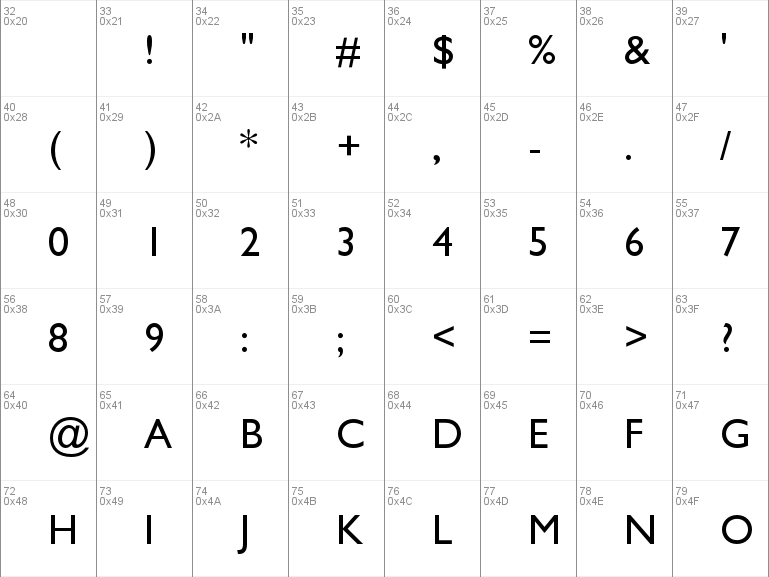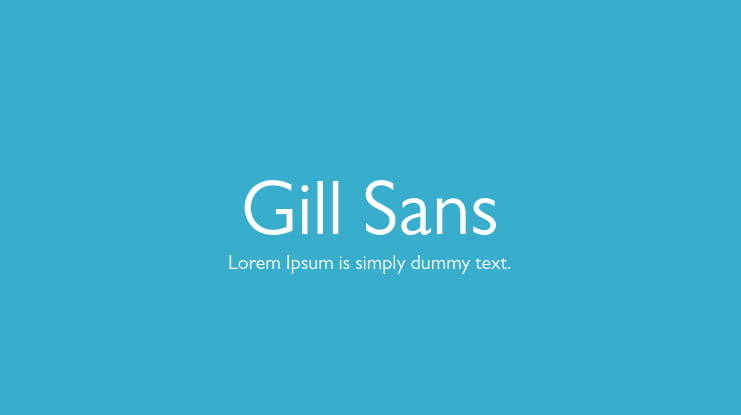

Gill Sans was released in 1928 by Monotype, initially as a set of titling capitals that was quickly followed by a lower-case. As a young artist, Gill had assisted Johnston in its early development stages. In 1926, Douglas Cleverdon, a young printer-publisher, opened a bookshop in Bristol, and Gill painted a fascia for the shop for him in sans-serif capitals.
Gill Sans Font Meme Full Metal Type
The roots of Gill Sans can be traced to the typeface that Gills teacher, Edward Johnston, designed for the signage of the London Underground Railway in 1918. The successful Gill Sans was designed by the English artist and type designer Eric Gill and issued by Monotype in 1928 to 1930. Monotype Type Drawing Office 1928. Gill studied under the renowned calligrapher, Edward Johnston, the designer of the London Underground sans serif typeface. This influenced Gill who later experimented with sans serif designs, and in due course produced a set of capital letters.Hind Madurai How it works Github Font visualizer Logo maker. Gill Sans is designed to be legible from a distance and small sizes, which is great for any.Gill was commissioned to develop his alphabet into a full metal type family by his friend Stanley Morison, an influential Monotype executive and historian of printing.
Gill Sans Font Meme How To Best Spot
That’s why I decided to write this article series: to share some of my findings and, perhaps, stimulate further investigation.Inspired by the work of Keith Rayner, Tim J. Much research went into finding out how to best spot, segment, condense, translate and position timed text, but when it comes to the visual dimension, there isn’t much up-to-date information available online. Since then, this academic field has seen a huge increase in popularity and acknowledgement as a separate branch of translation studies.However, one aspect of subtitling remains largely uncharted to this day, and it is subtitle appearance — that is, the way subtitles look. One of the main reasons.To my knowledge, the history of subtitling research dates back to 1957, when Simon Laks released his pioneering work Le Sous-titrage de films: Sa technique, son esthétique. Gill Sans was designed by Eric Gill: a versatile, brilliant, and prolifically successful designer of the early part of the last century.
This approach is specific and easy to use, and it works well across all the appearance parameters.Subtitles, by their very nature, interfere with the image. Because I want the framework to be comprehensive, along with the usual it should also include non-traditional approaches to subtitling like integrated titles and VFX, newer forms of media such as video games and virtual reality, outdated and novel technologies, etc.To achieve that, I came up with this simple categorization of subtitle quality parameters:Looking at the scale from this perspective, if one appearance gives fewer/shorter saccades and fixations than another — and thus leads to faster reading — then it has better readability. Indeed, there are so many things to consider: the medium, the type of subtitling, the presentation method, the target audience, the display size, and so on. Structure is necessary — otherwise, the countless factors and variables can make the analysis disjointed and confusing.
Now, you might be surprised that beauty isn’t one of the requirements, but, as I said, it’s in the eye of the beholder. To sum up, a font with good aesthetics is balanced, aptly styled and not too spread out. The takeaway is this: before committing to a font, make sure it’s not inappropriate in some way.This concludes the second part of the article. For instance, I think everyone will agree that, however readable, the following subtitle design would be awful for a black-and-white thriller film:And so on. Here’s how I define it:Aesthetics of an appearance is the degree to which it harms the aesthetic value of the image.So, the more displeasing, intrusive or distracting an appearance is, the lower its score.Now, beauty is in the eye of the beholder, of course, but some aspects of it are no doubt objective. The extent of this interference depends largely on how they look, and it is this extent that the second scale measures.

On the other hand, if the image is letterboxed, you can put your subs on the black stripe and get nice contrast at all times for any font.Thin fonts outline poorly. Rick and Morty), and for them you might need something with a good contrast potential. For instance, cartoons tend to be bright (e.g.
If you know that the average viewer/player is likely to spend lots of time consuming your content non-stop, you might want to put more emphasis on readability.In some situations your font choice might be restricted by a technical aspect. For subtitling projects aimed at SD or lower, you need an appropriate font — one with no thin details.Here’s a serif font on a low-resolution screen (Air Koryo safety video):Nowadays, with people binge-watching whole shows in a single day and playing video games for hours on end, eye strain can be a strong influencing factor for some projects. Information kiosks, in‑flight entertainment systems, classroom projectors, older TV sets and monitors — they all can be below 720p. Yes, it’s 2018, you’d expect HD everywhere, but that’s not how it is. In that case it’s best to use a bold font that will help the subs stand out against the image.Some fonts — particularly those with fine elements — don’t render well on low-res displays.



 0 kommentar(er)
0 kommentar(er)
